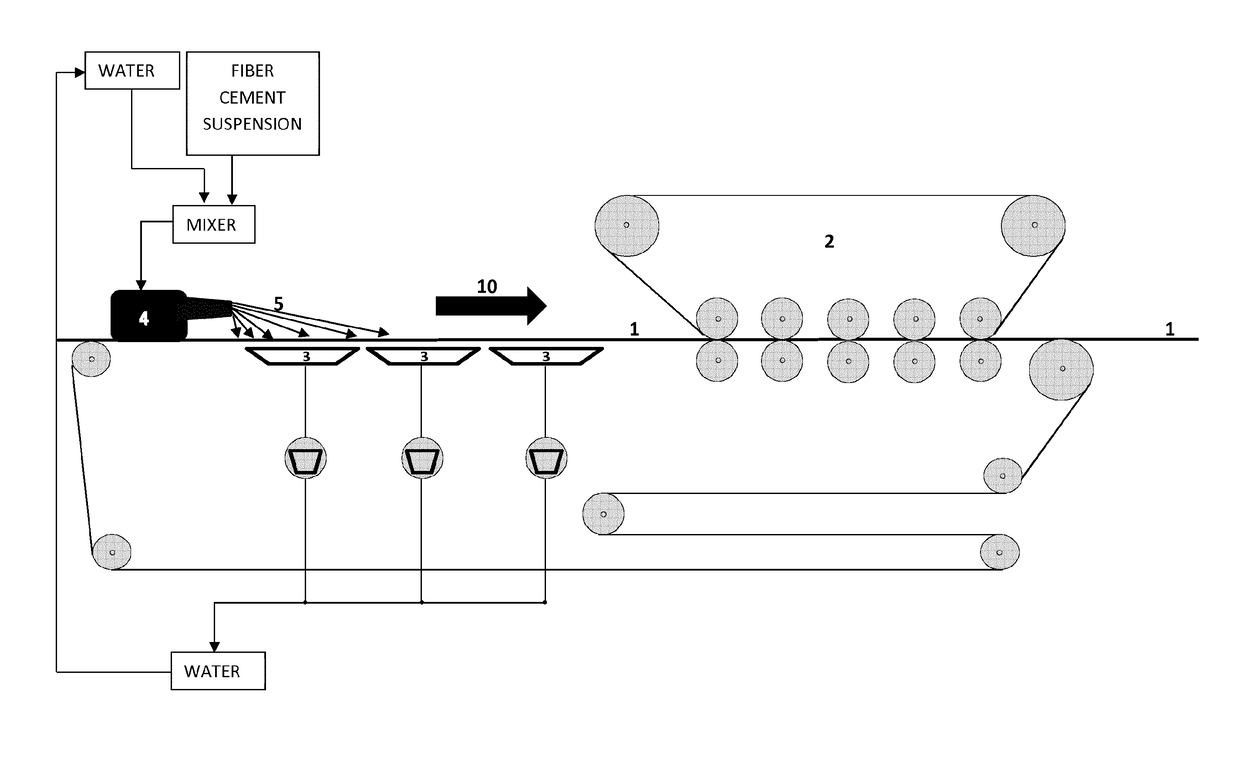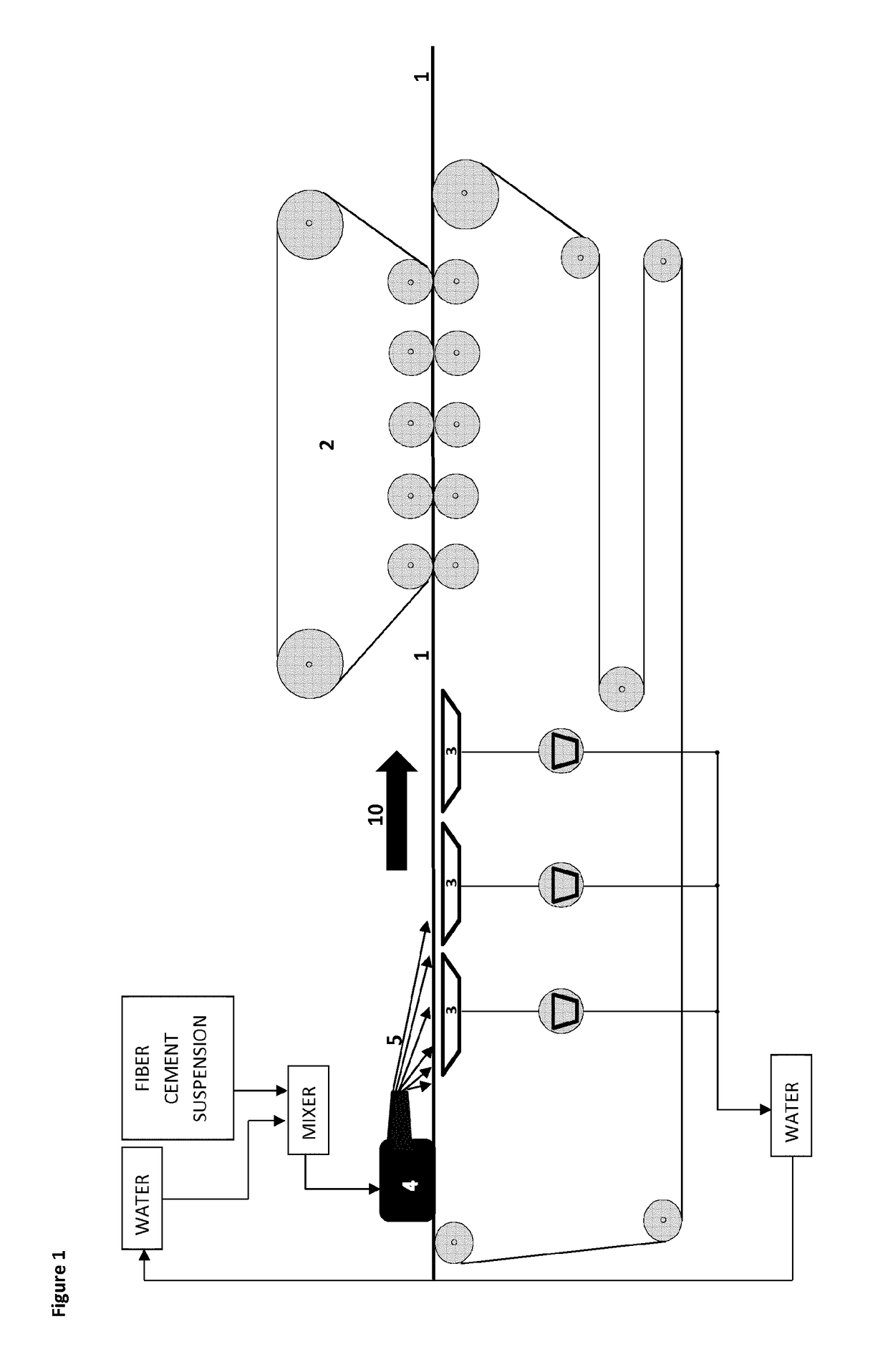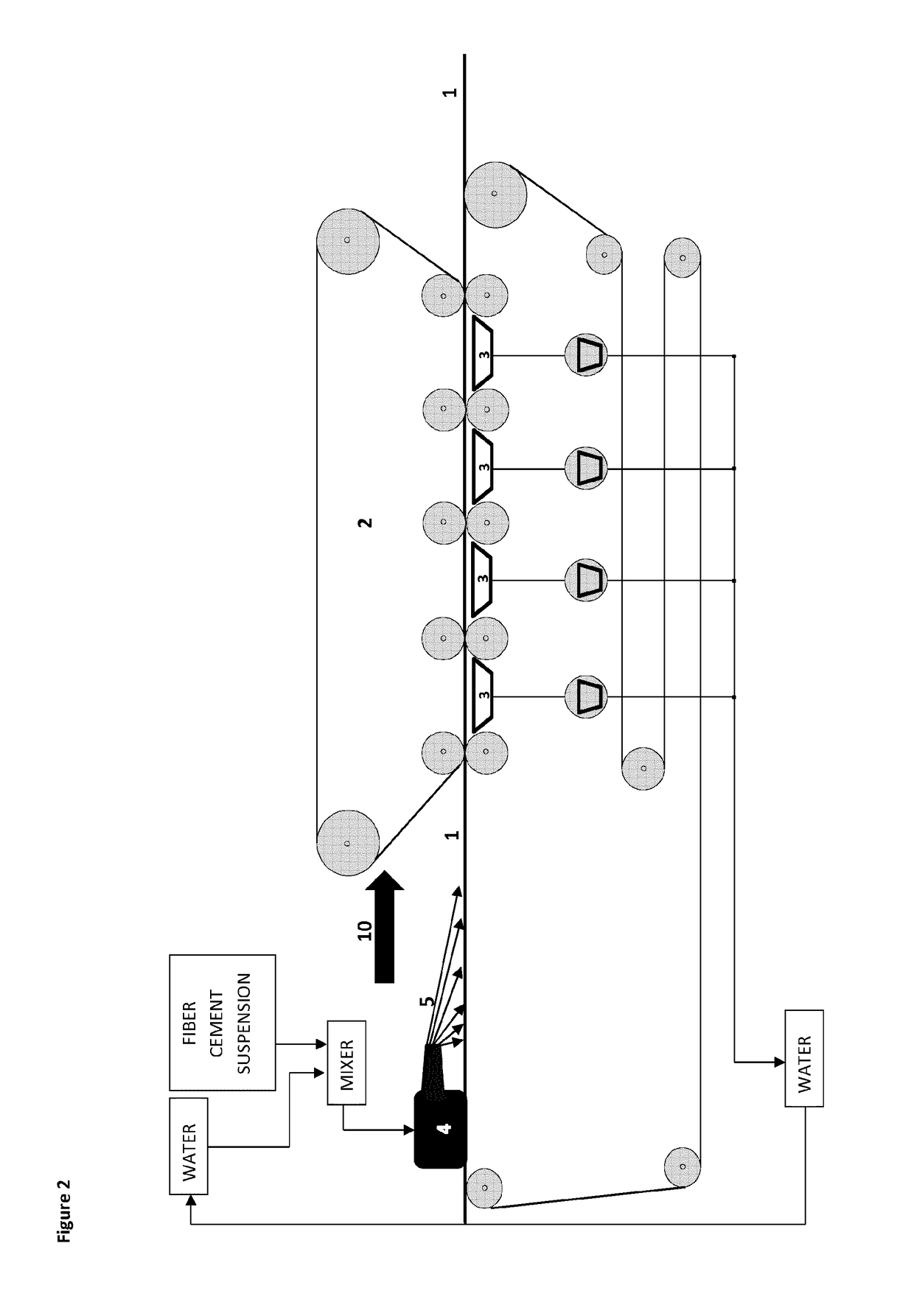Process and apparatus for making a fiber cement sheet
a technology of fiber cement and process, applied in the direction of cement shaping conveyor, manufacturing tools, shaping apparatus, etc., can solve the problems of low mechanical strength of the crosswise fiber cement sheet, time-consuming, laborious, expensive, etc., and achieve the effect of improving properties
- Summary
- Abstract
- Description
- Claims
- Application Information
AI Technical Summary
Benefits of technology
Problems solved by technology
Method used
Image
Examples
example 1
n of Fiber Cement Sheets According to the Processes of the Invention
[0228]One-layered fiber cement sheets were produced using the processes according to the present invention. A fiber cement slurry composition was prepared, mainly consisting of Portland cement, water, and about 5% of cellulose fibers (percentage of the total weight of slurry) by continuously mixing at least fibers, cement and water in a container.
[0229]The predetermined density was set to be between about 0.55.
[0230]The prepared fiber cementitious slurry was continuously discharged on an endless water-permeable transport belt using a flow-on distribution system producing a continuous flow of the fiber cement slurry onto a water-permeable felt transport belt.
[0231]Excess of water was removed from the slurry through the water-permeable transport belt using suction thereby increasing the density of the fiber cement layer. More particularly, three consecutive vacuum pumps with increasing underpressures of between about ...
PUM
| Property | Measurement | Unit |
|---|---|---|
| Thickness | aaaaa | aaaaa |
| Thickness | aaaaa | aaaaa |
| Pressure | aaaaa | aaaaa |
Abstract
Description
Claims
Application Information
 Login to View More
Login to View More - R&D
- Intellectual Property
- Life Sciences
- Materials
- Tech Scout
- Unparalleled Data Quality
- Higher Quality Content
- 60% Fewer Hallucinations
Browse by: Latest US Patents, China's latest patents, Technical Efficacy Thesaurus, Application Domain, Technology Topic, Popular Technical Reports.
© 2025 PatSnap. All rights reserved.Legal|Privacy policy|Modern Slavery Act Transparency Statement|Sitemap|About US| Contact US: help@patsnap.com



